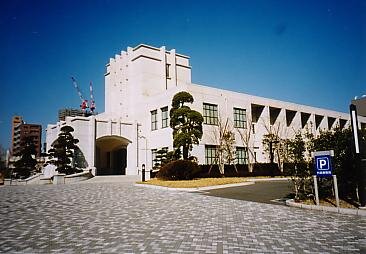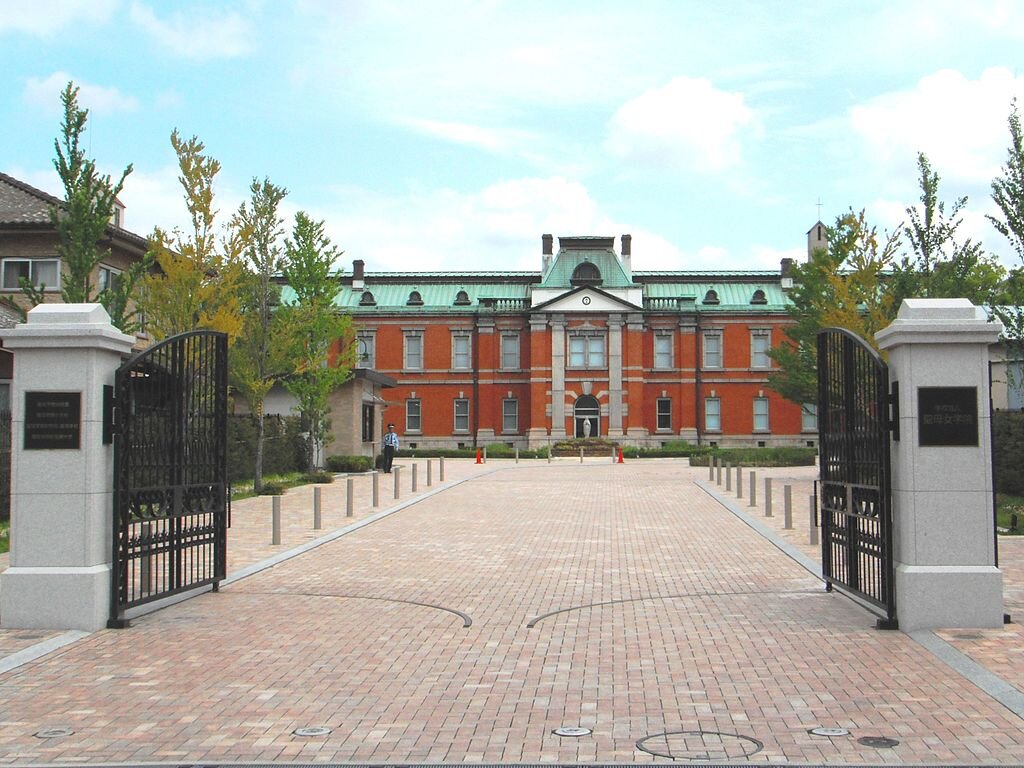Futenma Airbase
Emergence of Contestation: 2015
The relocation of the Futenma airbase to Henoko in Naga is accompanied by a spectrum of reactions which cannot easily be covered by the duality of simply being "for" or "against" the move. In the case of Komeito politicians, there exists a marked split in the positions of the party's local representatives ("against"), and the national representatives (reluctant support), which demonstrates that the common perceptions of left-wing and right-wing politics fail to cover the complexity of the socio-economic and political reality, as well as the intricate dynamics of local, national, and international issues.
Negotiating Historical Memory in an Era of Purity Politics - Anne Mette Fisker-Nielsen
Centre for Contemporary Arts, Singapore
Emergence of Contestation: 1960s
The Centre for Contemporary Art in Singapore opened in 2013 in a series of white buildings, neatly spaced out in a green environment near the Pasir Panjang district. While the seeming archetype of a white cube neutral settings, the cluster of white buildings were originally the Gillman Barracks, erected in 1936 as part of a large military zone complete with schools, hospital facilities and residential housing. They were handed over to the Singaporean State following its declaration of independence in 1965, before being repurposed into an aesthetic abstraction bordering on the decorative.
Art in Former Military Sites: Spectres of Geopolitics in Southeast Asia - Gabriel Gee
Angaur State Nature Park Project
Emergence of Contestation: 2001
The 2001 Angaur State Nature Park Project was organised by a veteran of the battle which had taken place there, Yōji Kurata (倉田洋二1927-2019), in order to stave off a fading of the memories of the historic events which had taken place there. He launched the Angaur State Nature Park Project, an ecotourism package that incorporated war site tours in order to appeal to Japanese visitors without direct connections with the battle.While the project was ultimately unsuccessful, the project sought to invorporate locals within the material commemoration of events two generations ago.
Negotiating War Memories at the Edge of the Former Japanese Empire: Two Japanese Veterans' Projects in Palau, Micronesia - Shingo Iitaka
Ahn Martyr Memorial Museum 【安重根(An Chung-gun)】
Emergence of Contestation: 2014
The South Korean President Park visited China in 2013, and expressed the idea of building a museum to commemorate An Chung-gun in Harbin, the city where he assassinated Ito Hirobumi. After the construction of the museum in 2014, it was protested against by the Japanese Foreign Minister (2014, Jan. 20). Though An is widely remembered as an Anti-Japanese patriot in China and South Korea, he was regarded as a terrorist in Japan.
Okawa Elementary School
Emergence of Contestation: 2011
In the wake of the March 2011 disasters in Tohoku, several remaining ruins have become sites of negative heritage. This site - at which the failure to manage the evacuation of pupils led to tragedy - has been subject of a debate between survivors and the Japanese government, with the former wanting to preserve the school buildings, and the latter seeking to demolish them.
Framing Negative Heritage in Disaster Risk Education: School Memorials After 3.11 - Julia Gerster, Flavia Fulco
DMZ
Emergence of Contestation: 1945, 1950
The DMZ between North and South Korea is being reconceptualised as a potential site for a future peace park. This is in line with a new foreign policy agenda for the inter-Korea summit meetings, focused on fostering peace. The United Nations is a crucial actor in this process, as it originally was in the process of creating the DMZ itself. Both the DMZ and the UN Command in charge of the DMZ are undergoing a transformation from the Cold War era, changing course towards a reconciliation, as opposed to merely containment.
The Demilitarized Zone in Korea: Past, Present, and Future - Hyein Kim
Ichigaya Memorial Hall
Emergence of Contestation: 1946, 1990s
The courtroom at the Ichigaya site where the International Military Tribunal for the Far East was held has been preserved through a collaborative effort of conservative and progressive activists. The site was supposedly to commemorate either the Japanese wartime crimes, or the allies' victor's justice over the defeated Japanese leaders. When contrasted with the site of the Nuremberg Trials, however, the site draws little attention to the war trials themselves. Moreover, the items exhibited at Ichigaya make a bias in favour of the "victor's justice" narrative apparent.
Competing Memories of Victor's Justice vs Aggressive Warfare at Ichigaya Memorial - André Hertrich
Ainu Remains
Emergence of Contestation: 1869
The Ainu human remains stolen from Hokkaido gravesites for scientific purposes in the period of the Japanese colonisation of Hokkaido are presently still housed in museum collections across the globe, provoking protest from Ainu activists who demand their return. The remains themselves have become sites of memory through which Japanese colonial amnesia is challenged.
Stolen Ainu Remains as Sites of Memory - Michael Roellinghoff
Comfort Women Statue (Seoul)
Emergence of Contestation: 1991, 2011
The Statue of Peace serves as a memorial to young Korean women who became victims of the Japanese wartime military prostitution system. The physical placement of the Statue is Seoul opposite the Japanese embassy was highly symbolic of the victims' waiting for a full and formal apology. However, its reach and the political pressure it could exert were amplified through digital reproduction, which ultimately allowed for a global debate to be kindled. Understanding the Statue in the context of visual politics allows for understanding its rise as a symbol of resistance.
Visualising Korea: The Politics of the Statue of Peace - David Chapman
Meiji Shrine
Emergence of Contestation: 1912
The Meiji Shrine today is a popular tourist destination, and a site for a wide variety of events and festivities. However, the Shrine also functions as a mnemonic site with various audiences, and is attached with a complex web of meanings, - at times seemingly contradictory, - from the veneration of the Meiji emperor to a symbol of postwar democratisation. The Shrine is a centre not only for religious life, but also for historical consciousness.
Forgetting War and Remembering Progress at the Meiji Shrine - Peter Zarrow
Tsugaru Storytelling
The "Wa no mukashi-ko" storytellers from the Tsugaru region in Aomori construct heritage through inherited oral folklore recited in dialect, which they adapt and pass on to the local people. This vernacular tradition stands in contrast with the hegemonic discourse of authenticity linked to the region through narratives manufactured in the country's centre in Tokyo.
The Inheritance of Voice, Intentionality, and Provincial Japan: Storytelling in Tsugaru - Joshua Lee Solomon
Kyoto War Heritage
Emergence of Contestation: 1945
Members of the 16th Division of the Imperial Japanese Army stationed in Kyoto were sent out across the Asia-Pacific, linking various sites across the city to Japan's military past. This past and the associated sites, however, are conspicuously absent from Kyoto's tourism landscape, and remain a negative heritage, yet to be dealt with.
Kyoto's Contested Asia-Pacific War Heritage: Sites of the Army's 16th Division - Justin Aukema
Christian Sites of Nagasaki
Emergence of Contestation: 1600s, 2018
The Nagasaki region features a number of historic sites of hidden Christian worship. The sites serve both the goals of institutional tourism as internationally recognised Japanese heritage, and the narratives of local guides as sites of importance to rural folk culture. Neither narrative can be considered the dominant one.
World Heritage, Tourism, and Cultural Intimacy in Nagasaki - Raluca Mateoc
Hokkaido Jingu
Emergence of Contestation: 1869, 1895, 1945, 1949-1987
The Shinto shrines built over time along the expanding Imperial Japanese border carried different associations in different locations across varying points in time. While the shrines in Hokkaido retained a religious association even after the war and were linked to the pioneer narrative, in colonial Taiwan the shrines were primarily locations of patriotic worship of the dead, and, as they became set as secular after the war, they transformed into symbols of a multicultural Taiwan.
Desecration or Veneration: The Legacy of Shinto Shrines at the Borders of Imperial Japan - Karli Shimizu
Arahama Elementary School
Emergence of Contestation: 2011
In the wake of the March 2011 disasters in Tohoku, several remaining ruins have become sites of negative heritage. This site - an example of a successful evacuation - is being preserved as a monument to the importance of disaster preparation (BOSAI).
Framing Negative Heritage in Disaster Risk Education: School Memorials After 3.11 - Julia Gerster, Flavia Fulco
War Memorial of Korea
Emergence of Contestation - 1994
The War Memorial in Seoul commemorates the successful military campaigns of Korea, and aims at preventing future wars through education. However, the museum has been criticised as a glorification of Korea's military past, as it fails to offer any counter-narratives and does not highlight wartime atrocities perpetrated by Korean soldiers in Vietnam, as well as as domestically during the suppression of the democratic protests of 1980.
War Memorial of Korea - Dasom Lee
































